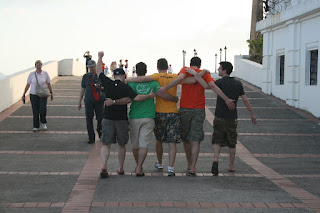Myself and the cooperative’s treasurer, Auristo Valdespino, had identified a real problem with our finances; our external rentals for canoes and motors had become an astronomical cost (approximately 10% of our operational costs). Canoes are incredibly labor-intensive, and motors are difficult for the village to finance. Consequentially, the village only had a few boats and motors available to the tourism cooperative. The rest had to be rented (at $20 a pop) from Latino villages downriver. The problem was a cyclic; as we were constantly having to shell out money for rentals we were barely making a profit, let alone saving money to finance the acquisition of new boats and motors.
As a new cooperative, we applied for a loan through IPACOOP. Myself and Auristo put together an analysis of the financing needed and loan repayment, demonstrating that with the money saved from having our own internal canoes and motors we could easily pay back our loan within 2 years.
So construction begun! And what a process it has been. We purchased 2 Suzuki motors, at HP 30, 50 life jackets and 1 canoe from a neighboring village. Internally, we’ve been hard at work on two more canoes. We just finished a canoe in the mountain about a half hour from the village. Its our biggest yet: 10 armspans, with the capacity to hold 16 tourists! And we’re hard at work on the next one, which will be a smaller boat that will consume less gas in the event an agency only calls with 2-3 visitors.
Below are some pictures from the “junta” (communal work day) when we took the canoe out of the mountain. It was the most incredible thing I have witnessed to date. As the certified village photographer (and the curious little PC worker who likes to tag along on manly mountain endeavours), I went to the mountain with the men of the village at 6 am. They had to first flip the canoe. Then, looping rope on trees on either side, they had to slowly ease it down one of the steepest inclines in the area. Halfway down, the weight of the canoe snapped the tree supporting it, and it flew down the mountain, nearly taking out the “catchers” that guide its front nose. It crashed into a tree at the hill’s base, with such force that it became deeply embedded, and we had to run the half hour back to the village for a chainsaw to take out the second tree.
The reversal, coming up the hill and into the village was the biggest feat, however. The women, who had been up cooking since 4 am, met us at the top of the hill to help with this part. With all the men of the village behind the canoe, pushing it uphill, every woman and child positioned themselves along a rope to pull the canoe uphill.
It was so much work, and I hurt for days afterwards. Still it was one of the best days I’ve had in the village so far. It was a beautiful thing to see everyone in the village, and both main families, come together to complete this arduous project.
Below are also some pictures of the finished product. Eliecer and I have been the official boat painter; he’s painted the body and I’ve stenciled the letter of the cooperative’s name: Tranchichi Embera Drua, R.L.
 Phase 1: Two New 30 HP Motors and Lifejackets for Tourists
Phase 1: Two New 30 HP Motors and Lifejackets for TouristsShimmeying the canoe down the mountain- with only a rope, 4 guys bulaying and a few (very courageous/drunk) guys catching it at the bottom...
Rope burns on the trees used. Explains why the tree snapped from the weight of the canoe, and why it went flying down the mountain.
When the rope snapped, and the canoe went flying, the force embedded the canoe in this tree. We had to run the 1/2 hour back to the village for a chainsaw to fix it.
Heev-Ho!
Heev- Ho Amy!
To get the canoe up the last uphill incline to the village, we had all the men below it pushing...and every woman and child on a rope pulling it up into the community. Go Werara! (Ladies)
7 hours later, WE MADE IT. My happy village. :)
My stellar paint job. Coopereativa Tranchichi Embera Drua, R.L. SO Official :)
Finished product, and one of our proud captains!























































